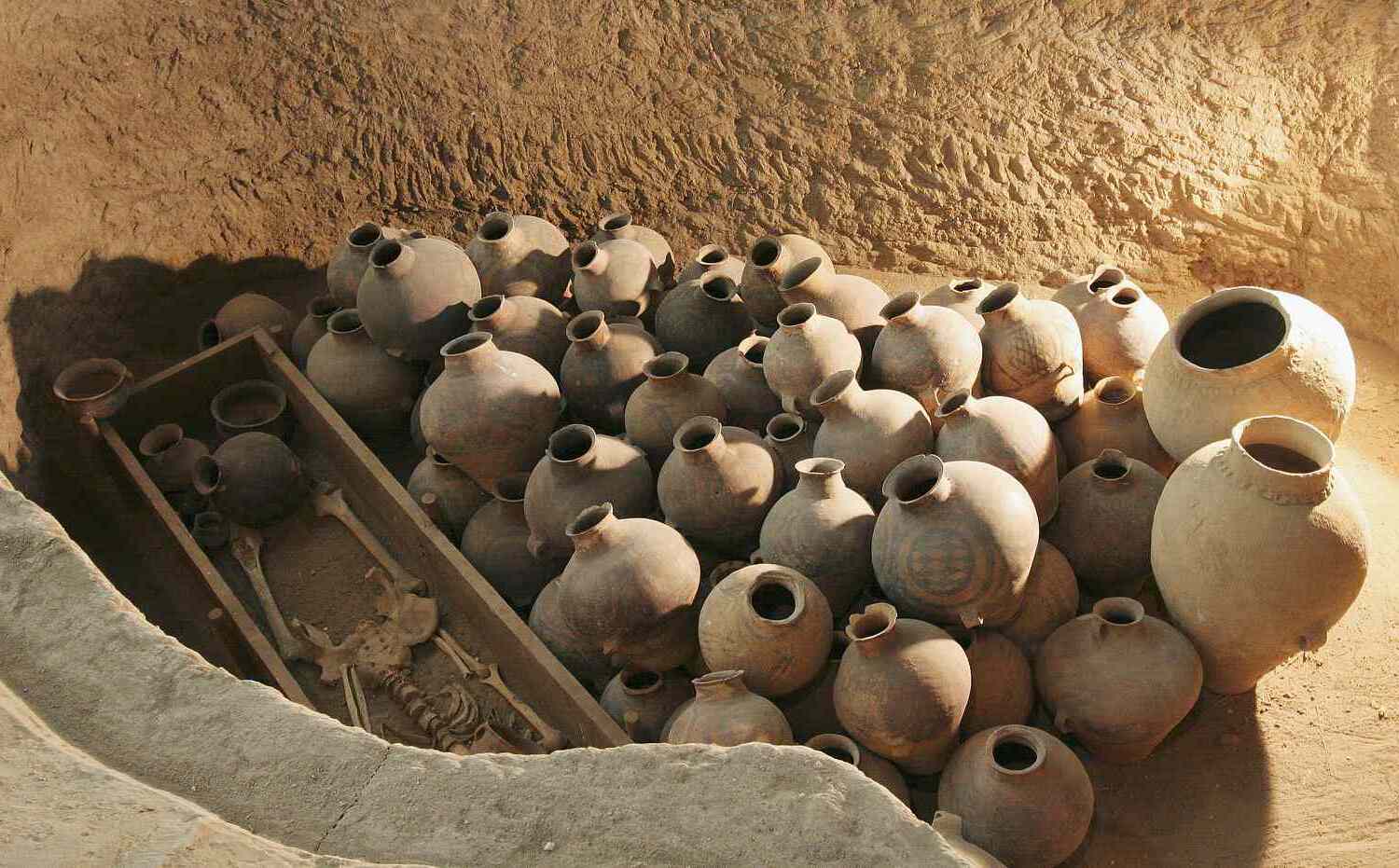
Ceramics, one of humanity's oldest art forms, dates back to 28,000 BCE. From ancient figurines to modern medical implants, ceramics have evolved remarkably. Early humans used clay to create pottery, figurines, and tools, with the oldest known artifact being the Venus of Dolní Věstonice. As civilizations grew, so did ceramic techniques, spreading from Asia to Europe and the Middle East. The Neolithic era saw a surge in pottery use, while innovations like glazes and kilns emerged in Egypt and Mesopotamia. Today, ceramics are not just art but essential in technology, medicine, and construction, showcasing human ingenuity across millennia.
Key Takeaways:
- Ceramics have a rich history dating back to 28,000 BCE, evolving from simple clay figures to intricate pottery. They reflect human creativity and cultural values across civilizations.
- Modern ceramics continue to find new applications, from medical implants to decorative items. Their unique characteristics and processes require skill and precision, making them a fascinating art form.
Ancient Beginnings of Ceramics
Ceramics have been around for thousands of years, evolving from simple clay figures to intricate pottery and beyond. Let's explore the early history of this fascinating art form.
-
Ancient Origins: Ceramics date back to 28,000 BCE. The Venus of Dolní Věstonice, a statuette from the Czech Republic, is the earliest known ceramic artifact.
-
Spread of Pottery: Pottery spread from Asia to the Middle East and Europe. In China, fragments from 18,000-17,000 BCE were found in the Xianrendong cave.
-
Neolithic Era: Around 9,000 BCE, clay-based ceramics became popular for containers, art, tiles, and bricks. Settled communities boosted pottery use.
-
Early Pottery Techniques: Initially made in open fires, pottery advanced with special ovens in the Near East around 8,000 BCE, allowing higher temperatures.
Innovations and Techniques
As civilizations advanced, so did their ceramic techniques and innovations. These developments laid the groundwork for modern ceramics.
-
Glazes and Glass: Glazes were discovered in Egypt around 5,000-8,000 BCE. Phoenician merchants accidentally produced glass around 5,000 BCE by melting sodium-rich rocks near a fire.
-
Mesopotamian Innovations: Around 3,500 BCE, Mesopotamians produced glazed pottery. The wheel, crucial for pottery, was also invented during this period.
-
Greek and Roman Contributions: Around 700 BCE, Greeks used "black-figure" ceramics for mythological scenes. Romans extensively used ceramics in architecture and daily life.
-
Chinese Porcelain: The Chinese introduced porcelain during the Tang dynasty (618-907 AD), valued for its durability and beauty, often sold at its weight in gold.
Cultural Significance
Ceramics have held cultural significance across various civilizations, reflecting their values, beliefs, and daily life.
-
Japanese Raku Porcelain: Since the 16th century, Japanese raku porcelain, known for its crackle pattern, has been used in traditional tea ceremonies.
-
Ancient Egyptian Contributions: Egyptians used ceramics for decorated pottery and sculptures, often placing them in tombs and temples.
-
Ceramic Art in Greece: In ancient Greece, ceramic pottery became an art form, with "black-figure" ceramics depicting mythological scenes.
Industrial and Modern Applications
The Industrial Revolution and modern advancements have expanded the use of ceramics beyond art and daily life.
-
Industrial Revolution: High-temperature furnaces in Europe during the 1400s enabled the production of steel, glass, ceramics, and cements.
-
Modern Applications: Today, ceramics are used in dishes, sculptures, medical implants, electrical insulators, and construction materials.
-
Ceramic Capacitors: In the 1920s, high-strength quartz-enriched porcelain was introduced for insulators, spark plugs, and ceramic capacitors.
-
Oxide Magnetic Materials: Research in the 1940s led to new ceramic materials with unique properties, such as ferrites and ferroelectric materials.
Technological Advancements
Technological advancements have continually pushed the boundaries of what ceramics can achieve.
-
Alumina Insulators: In the 1960s, alumina insulators for voltages over 220 kV were introduced, along with applications for carbides and nitrides.
-
Partially Stabilized Zirconia: Developed in the 1970s, this material led to high-performance ceramic substrates for catalytic converters and diesel engine filters.
-
Ceramic High-Temperature Superconductors: In the 1980s, these materials emerged, with potential to revolutionize energy transmission and storage.
Characteristics and Processes
Understanding the characteristics and processes involved in ceramics reveals the complexity and skill required in this craft.
-
Earthenware Characteristics: Earthenware, a low-fire clay, is not waterproof. Glazing can cover the surface and make it waterproof.
-
Biscuit Stage: After the first firing, the clay becomes "biscuit," a crucial stage for absorbing glaze.
-
Firing Process: Each ceramic piece is fired at least twice, with the first firing above 1000°C and a second firing after decoration.
-
Retouch Firing: A fourth firing can correct small imperfections, giving the piece a second chance at perfection.
Artistic Techniques
Various artistic techniques add unique touches to ceramic pieces, enhancing their beauty and functionality.
-
Vinegar in Sponging: Vinegar minimizes casting spots during sponging, helping eliminate imperfections after glazing and firing.
-
Glaze Composition: Glaze, a liquid coating layer, is applied in a liquid state and fused to the ceramics body during firing.
-
Craquelé Effect: Over time, tiny crackles form in the vitreous layer, adding an artistic touch. Some glazes intentionally recreate this effect.
Cultural and Historical Impact
Ceramics have left a lasting impact on cultures and history, reflecting human ingenuity and creativity.
-
Kilns and Ovens: Special ovens called kilns heat and bake ceramics, making them sturdy and durable.
-
Japanese Raku Tradition: Japanese raku porcelain, known for its crackle pattern, is used in traditional tea ceremonies.
-
Porcelain Value: In ancient times, porcelain was so highly valued that it was often sold at its weight in gold.
Modern-Day Ceramics
Today's ceramics continue to evolve, finding new applications and maintaining their cultural significance.
-
Clay Preparation: Before reaching the pottery workshop, clay undergoes complex processes to remove impurities and achieve desired characteristics.
-
Firing Temperatures: Clay requires high temperatures, around 1900°F (1038°C), for firing, making home ovens unsuitable.
-
Porcelain Strength: A thin porcelain cup can be stronger than a thick-walled red clay pot due to its porous structure after firing.
-
Translucent Porcelain: Thin porcelain can be translucent to light, almost like glass, suitable for decorative items.
-
Gold Stripes on Dishes: Some dishes have gold stripes made of real gold, with preparations containing 10-12% precious metal.
-
Expensive Porcelain: The Ming Dynasty's "Chicken Cup," a small bowl, sold for $36 million in 2015, reflecting its high value.
-
Heat Retention in Ceramics: Ceramic tableware absorbs heat, slowly returning it to the dish, keeping food and drinks fresh longer.
The Timeless Craft of Ceramics
Ceramics have been a cornerstone of human civilization for thousands of years. From the Venus of Dolní Věstonice to modern medical implants, ceramics have evolved dramatically. Early pottery techniques and the invention of glazes in Egypt laid the groundwork for future innovations. The Chinese porcelain and Japanese raku traditions highlight the artistry and cultural significance of ceramics. The Industrial Revolution and subsequent technological advancements expanded ceramics' applications, from ceramic capacitors to high-temperature superconductors. Each piece, whether an ancient artifact or a modern marvel, tells a story of human ingenuity and creativity. The journey of ceramics, from simple clay pots to complex industrial materials, showcases our ability to adapt and innovate. This timeless craft continues to shape our world, proving that ceramics are not just relics of the past but vital components of our present and future.
Frequently Asked Questions
Was this page helpful?
Our commitment to delivering trustworthy and engaging content is at the heart of what we do. Each fact on our site is contributed by real users like you, bringing a wealth of diverse insights and information. To ensure the highest standards of accuracy and reliability, our dedicated editors meticulously review each submission. This process guarantees that the facts we share are not only fascinating but also credible. Trust in our commitment to quality and authenticity as you explore and learn with us.


